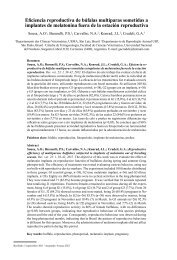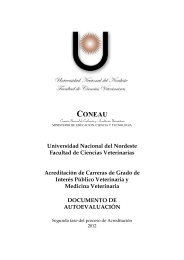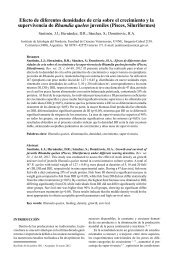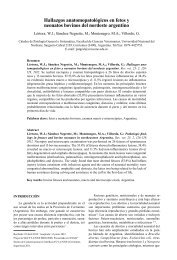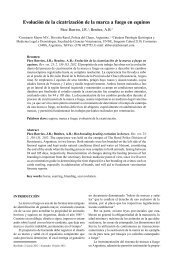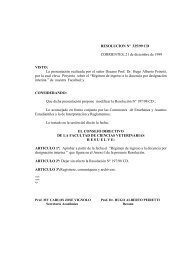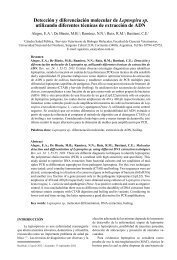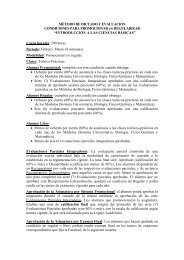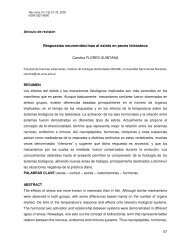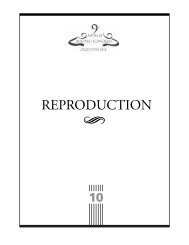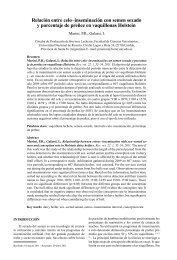MILK PRODUCTION
MILK PRODUCTION
MILK PRODUCTION
You also want an ePaper? Increase the reach of your titles
YUMPU automatically turns print PDFs into web optimized ePapers that Google loves.
MATERIAL AND METHOD<br />
580<br />
<strong>MILK</strong> <strong>PRODUCTION</strong><br />
Data from composition of milk from 301 buffaloes served as sample for this study, with a total of 2,833 observations over<br />
a period of 18 months (May/2008 to October/2009). The animals were from a commercial herd, milked mechanically, and<br />
located in a region with harsh climate, northeast of Brazil. Concentrations of fat (F), lactose (L), protein (P), solid (S),<br />
somatic cell count (SCC) and somatic cell score (SCS) were measured. A polynomial linear regression model was used as<br />
variable for time, with its degree determined by the model with all significant regression coefficients:<br />
Where is the observed value for the variable at the moment i, is the intercept and are the regression<br />
coefficients for the variable year-month, is the random error associated with it. The variable SCS was also analyzed by<br />
means of covariance functions (Variance Component - VC, Compound Symmetry - CS, Heterogeneous Compound Symmetry<br />
- CSH, Autoregressive - AR (1), Heterogeneous Autoregressive - ARH(1), Huiyn-Feldt - HF, Toeplitz - TOEP, Heterogeneous<br />
Toeplitz - TOEPH), to interpret the relationship between the different observations:<br />
Where is the value observed for somatic cell scores at time i, is the intercept and is the regression coefficient for<br />
the variable year-month, is the random error associated with each observation being considered associated with the<br />
different observations through the functions covariance.<br />
RESULTS AND DISCUSSION<br />
The best polynomial models for the variables were: S – linear, F - quadratic, L, SCC and SCS - cubic; P - grade four<br />
(Table 1). The conclusion is that variations found are consistent with expectations for the region, based on<br />
nutrition and pasture (F, L, P) and the influence of climate on the occurrence of subclinical mastitis (SCS and SCC).<br />
Table 1 – Estimates of the parameters of the regression equations for the concentrations of the components<br />
*All the parameters were significant at 1% (P < 0.01)<br />
Proceedings 9 th World Buffalo Congress



